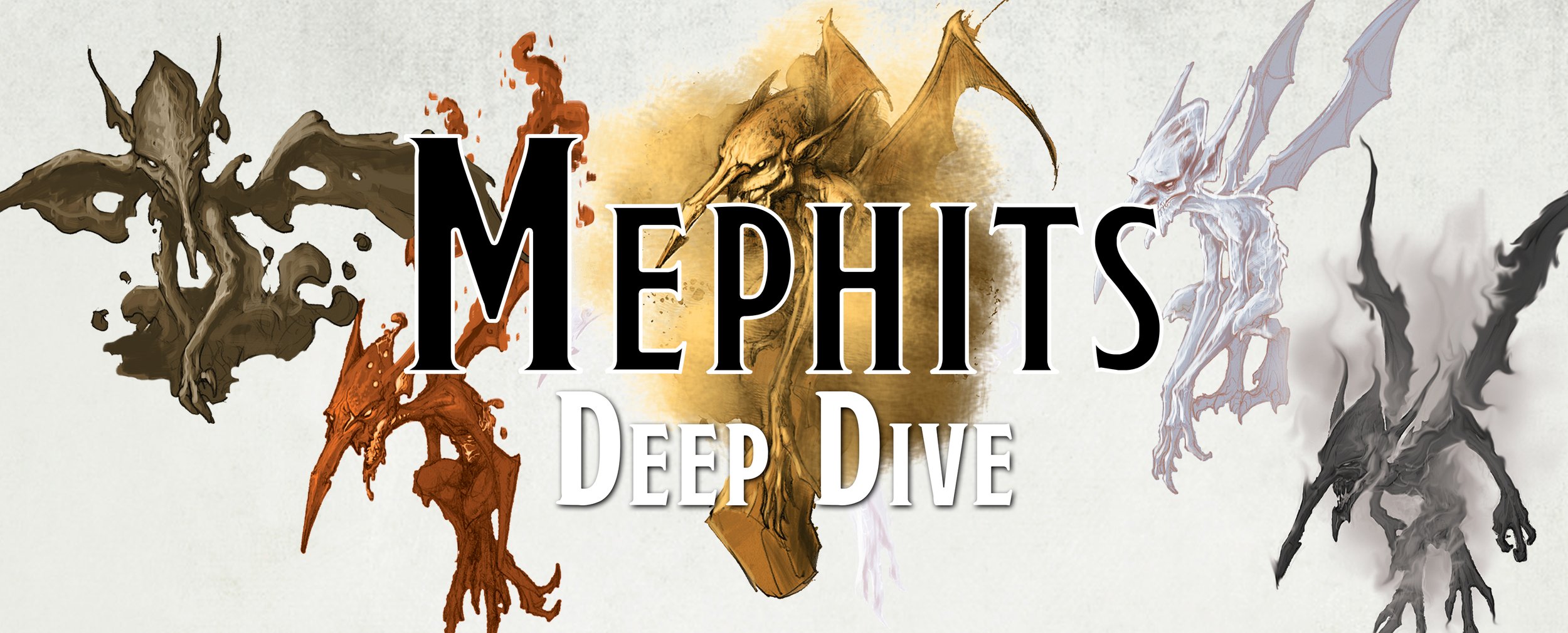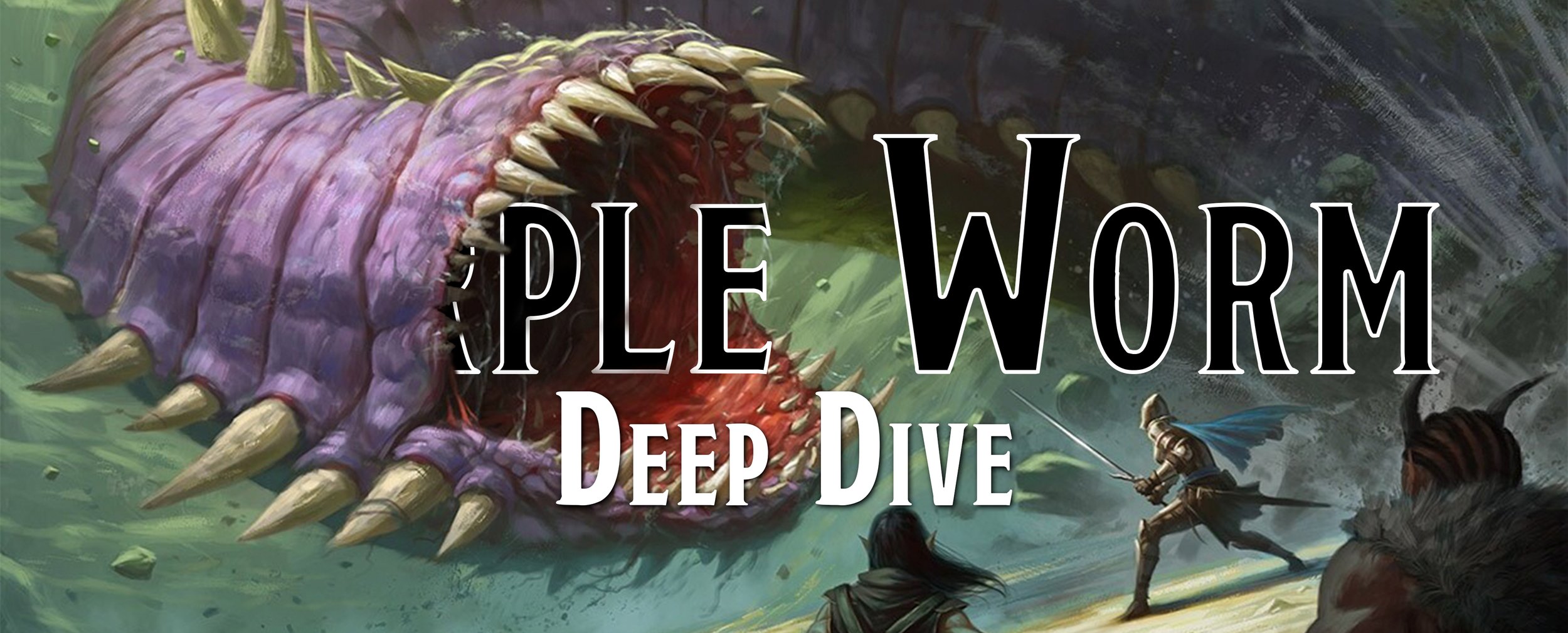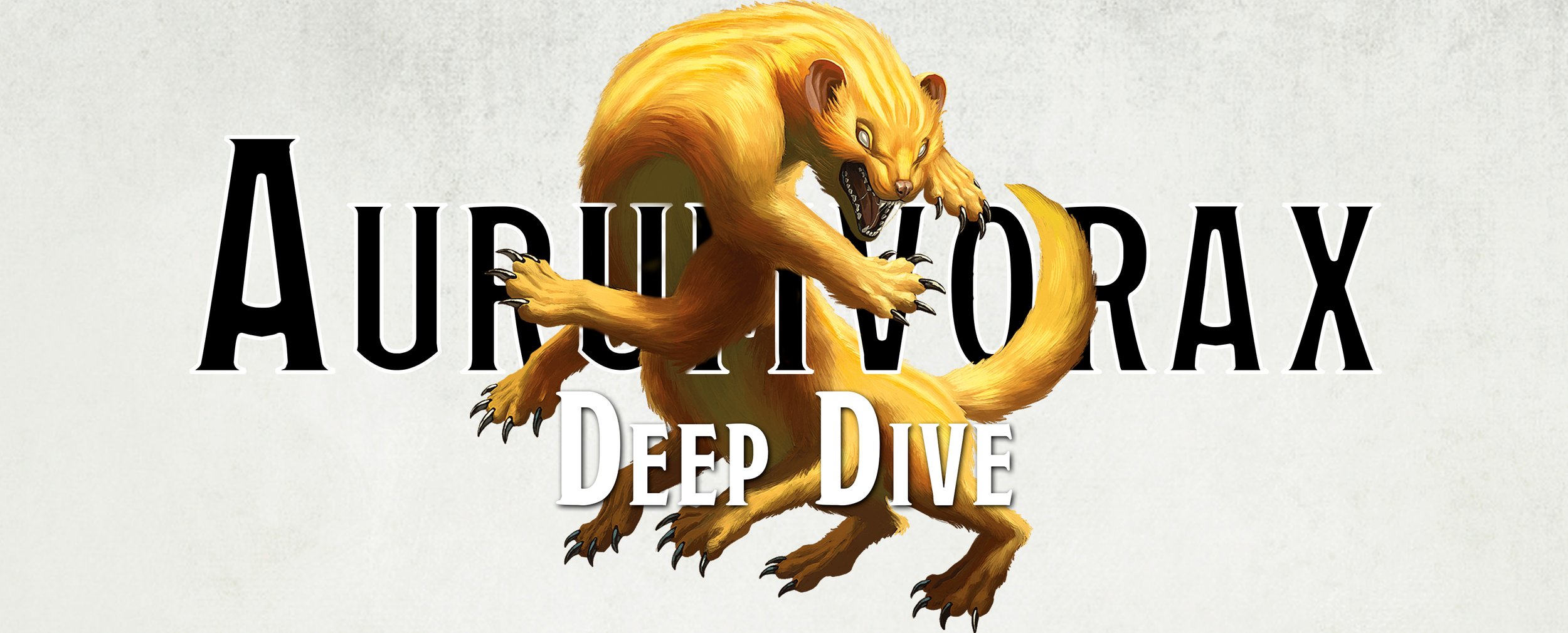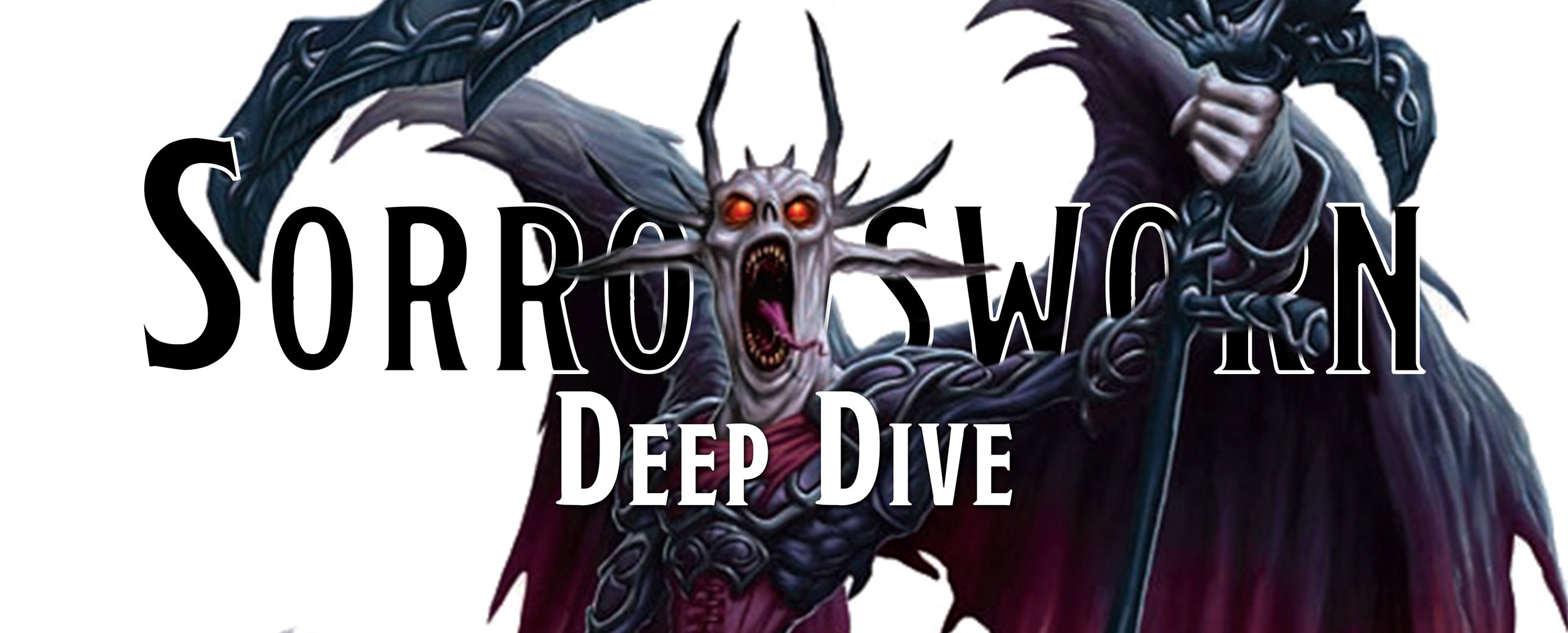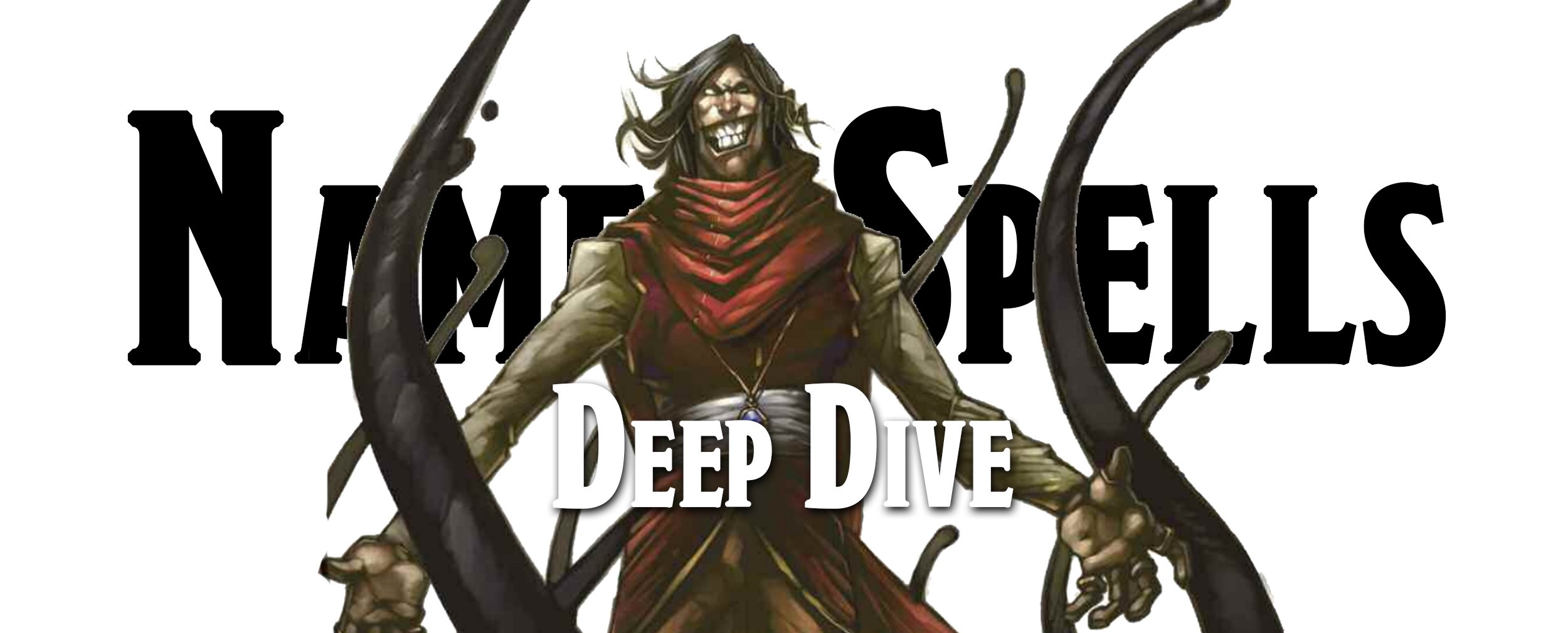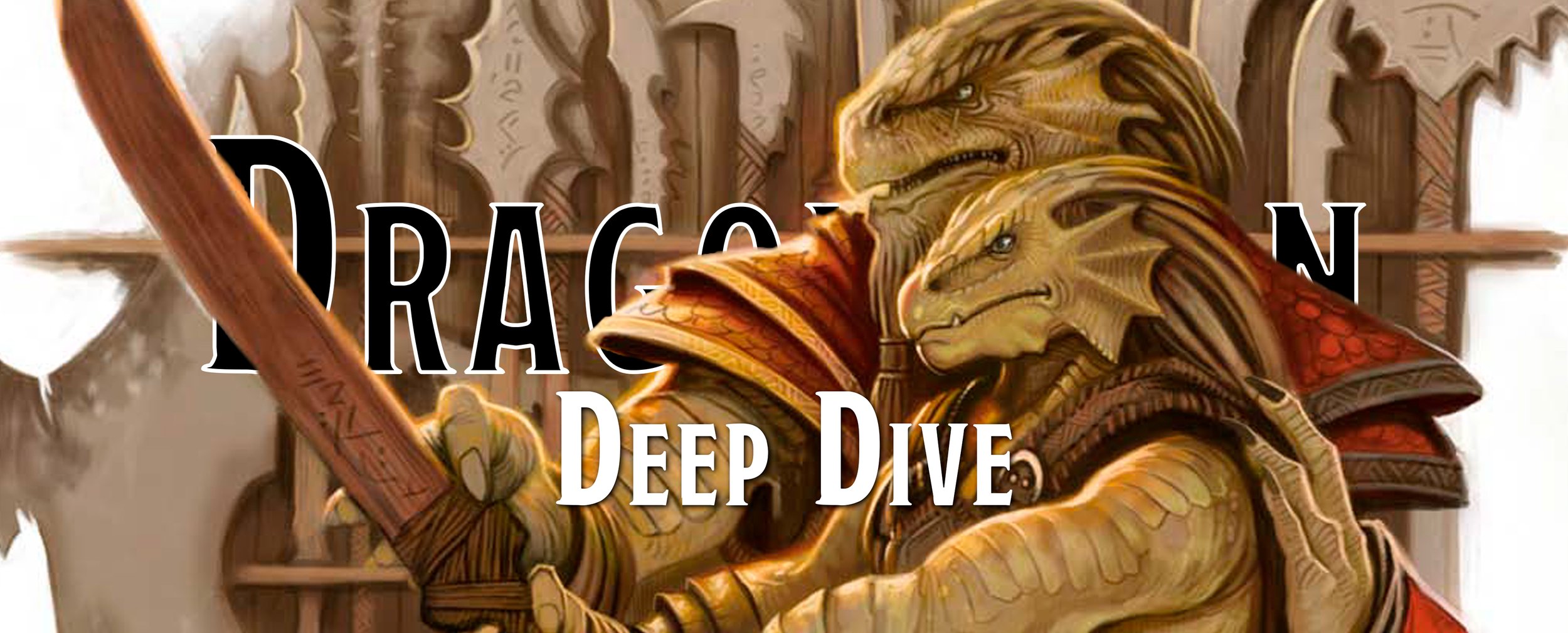Deep Dive - The Kenku
These raven-like humanoids are flightless, much like the penguin and emu, but they hold on to ancient memories. The Kenku once could fly but had it snatched away from them, cursed to suffer for their avarice. What could they have done to curse their entire race to suffer such a terrible fate? Why all of a sudden can they not talk and defend themselves? It's probably because their master doesn't want the truth to come out.
AD&D - Kenku
Frequency: Uncommon
No. Appearing: 2-8
Armor Class: 5
Move: 6”/18”
Hit Dice: 2-5
% in Lair: 20%
Treasure Type: F
No. of Attacks: 3 or 1
Damage/Attack: 1-4/1-4/1-6 or by weapon type
Special Attacks: Nil
Special Defenses: See below
Magic Resistance: 30%
Intelligence: Average
Alignment: Neutral
Size: M
Psionic Ability: Nil
Fiend Folio, 1981 TSR Inc.
The Kenku make their debut in the Fiend Folio (1981) and are a bit of a surprise for those that only know the Kenku in the later editions. These creatures are not to be trifled with, as their innate powers and abilities are crazy good. Based on their artwork in the book, you’d think they are walking pigeons. In many ways they are, but that would be selling the Kenku short.
The Kenku are bipedal humanoid birds who have arms and wings all at once. Its arms and legs are covered in feathers, but its hands and feet are the claws of a bird which can be used as weapons when needed, or it can use its beak to peck you to death. Normally, the Kenku will carry a scimitar or quarterstaff, but it’s always good to have a built-in backup. If they realize that pecking someone to death doesn’t work, they can fly away at tremendous speeds and then circle back to poop on their head.
The Kenku are all about gold and they have a wide variety of abilities and methods to make money. Kidnapping is their favorite method of extorting gold but are more than happy to interact with humanoids on a non-criminal basis as needed. When doing so, they are open to trading and bartering, but you’ll soon find out what cretins they are when whatever they used as payment is a cheap fake that turns into dust after they are long gone. They are natural liars, providing you with false information and advice and in fact, all of them are born with the thieving abilities of a 4th level thief.
This extends to the help they provide. If you see a bird-man trying to offer you non-verbal help or assistance, you run away. They are more than happy to lead others into danger with the promises of riches and fame but underselling just how dangerous or hazardous the quest is. They’ve determined that it is a lot easier to take stuff off a corpse than it is to be a productive member of society or to fight you for your gold.
Few Kenku lairs have been found, but those that have been are often located in small underground caverns. Many believe that there are larger, deeper caverns where hundreds of them may reside in a strange society of stealing and thieving from each other, though little proof has surfaced for it.
If you are unfortunate enough to encounter a group of Kenku, get ready to deal with a huge headache. For a walking pigeon, the Kenku is extremely good at disguising itself as a human, and you only get a 50-50 chance at detecting it, apparently because they aren’t very good at hiding their beak noses. Because they can’t speak, they use telepathy to communicate with one another, which means nosy adventurers can’t overhear their plans as they try to rob you blind. But, that’s just the beginning of their abilities.
The weakest of the Kenku can learn any 1st-level arcane spell, typically magic missile, and cast it once per day. Not too bad, but once they get a bit older, they can cast shape change on themselves once every 30 days and maintain it for 7 days. For those who aren’t aware, shape change is a 9th-level spell that allows the Kenku to transform into any creature they wish so long as they aren’t a demi-god, greater devil, demon prince, a dragon, greater demon, or similar creatures. Basically, the Kenku can turn itself into pretty much whatever mid-tier creature or lower that it wants, which can turn an easy fight with a single Kenku into a slog as it transforms into an efreet, then into a giant spider which is then followed up with a pool of water or anything else the Kenku, read: the DM, can think of. The Fiend Folio helpfully points out that they use this power to appear like gods and demand tribute from temples and worshipers of whatever god they are appearing as.
But that isn’t even their final form. Stronger Kenku learn an additional 1st-level spell, like shocking grasp, and can cast invisibility on themselves at will and it lasts however long they want. Luckily, Kenku get a bit less reckless in their old age, but they still aren’t done improving. The strongest of the Kenku get all the above and can pick up a 2nd-level spell, typically mirror-image or web, and they can also call lightning, a 3rd-level druid spell. There’s no mention of how often they can cast those spells, so we can only assume it’s either once a day or at will, which could make it so anyone going against an old Kenku is going to have a very bad day when it can just fly into the sky and then start shooting lightning at them.
2e - Kenku
Climate/Terrain: Any land
Frequency: Uncommon
Organization: Clan
Activity Cycle: Any
Diet: Omnivore
Intelligence: Average (8-10)
Treasure: F
Alignment: Neutral
No. Appearing: 2-8
Armor Class: 5
Movement: 6, Fl 18 (D)
Hit Dice: 2-5
THAC0: 2 HD: 19, 3-4 HD: 17, 5 HD: 15
No. of Attacks: 3 or 1
Damage/Attack: 1-4/1-4/1-6 or by weapon
Special Attacks: Nil
Special Defenses: See below
Magic Resistance: 30%
Size: M (5’-7’)
Morale: Elite (13)
XP Value: 2 HD: 175, 3 HD:420, 4 HD: 650, 5 HD:975
Monstrous Compendium Volume 2, 1989 TSR Inc.
The Kenku are first found in the Monstrous Compendium Volume 2 (1989) before being reprinted in the Monstrous Manual (1993). They are taller than previous as they can now stand up to 7 feet tall, but that’s the biggest difference. They can still fly and if they are walking on the ground, will keep their wings tucked against their backs, making it appear, from a distance, that they are wearing a pack. You can already sense that these guys are going to be tricky jerks, just like before.
These jerks still go around, disgusting themselves as a god, demanding worship and riches, though the older ones are a bit more restrained and will only kidnap a rich person and ransom them off. If they ever help you, you got a 5% chance that they are being kind, the other 95% of the time, they are just trying to screw you over so they can steal your gold and treasure. While many might find these tricksters to be rather frustrating, at least you don’t have to worry about them killing you, just making your life miserable. They don’t kill, unless they have no choice, and would rather fly away with all your treasure than fight you to the death.
Monstrous Manual, 1993 TSR Inc.
That all changes once you start messing with their eggs. Kenku eggs can be sold for a handsome sum of 250 gp while young Kenku can be sold for up to 500 gp. Kenku are valued as slaves and servants, and we can understand why they might be a bit prickly about it. If a free Kenku finds out one of their kind is enslaved, they’ll go and free them while trying to kidnap their master. If they succeed, they’ll turn the master into a slave and force them to work in their underground lairs, probably putting them in charge of cleaning all the bird poop down there.
How they actually give their orders to their slaves is a bit of a mystery as they can’t talk. When Kenku squawk, they are just reciting gibberish and instead communicate with each other with telepathy. There is no mention they can use this on outsiders, so it looks like they can only use symbols, sign language, and pantomimes. We can only imagine how difficult it is to work with them when they demand you to clean the nests and you accidentally make an omelet instead.
Speaking of eggs, we do learn how Kenku give birth. Females will lay a clutch of two to four eggs that will hatch in 60 days. The hatchlings are completely helpless and featherless, so pretty much just regular, ugly babies. It takes about 6 to 8 months before a hatchling gains its adult feathers and all the skills of a normal Kenku, meaning they are as skilled as a 4th-level rogue and can cast a single spell that they know. After that, it’s just a few short months until they can cast shape change and repeat the hilarious prank of acting like a god and demanding tribute.
Speaking of gods, the Kenku do have a god they worship and who is presented in the Monster Mythology (1992). You might be wondering why do the Kenku look so weird, well it’s because they are created in the image of Quorlinn, a trickster god who lied, deceived, and stole so that he would be noticed by his creator god and be granted godhood. Once Quorlinn was granted lesser godhood, he immediately began complaining about it and all the responsibilities he now has - which makes us feel bad for his creator if not for the fact his creator's name is never mentioned and instead, we are only told that they are secretly ashamed of their botched experiment and that Quorlinn is actually a failure of theirs. How nice.
Quorlinn teaches all Kenku in the art of thievery, disguise, magical powers, and relying only on yourself. Many think that Quorlinn only complains about his race of bird-men because he cares so much about their safety and doesn’t think he is powerful enough to protect them. It seems like the Kenku are just making excuses for worshipping a deity who can’t make up their mind whether they want to be a god or not. Those who do follow Quorlinn and become clerics are the most devious of their kind. They are the masterminds behind kidnappings, setting up traps, and pretty much any sneaky behavior that rogues and thieves get blamed for. They like to harbor secrets, no matter how trivial they might be, and act like children refusing to share with others.
And if you made a Kenku and are thinking of becoming a cleric of Quorlinn, we'd recommend you don't. Quorlinn hates helping out his priests and never sends avatars or omens. Besides, unless you are loud and annoying, there's a 25% chance Quorlinn won't give you your cleric spells every day simply because that's too much effort for him. We can’t tell who are the bigger children in this relationship, Quorlinn or his priests.
3.5e - Kenku
Medium Humanoid (Kenku)
Hit Dice: 1d8-1 (3hp)
Initiative: +2
Speed: 30 ft. (6 squares)
Armor Class: 17 (+2 Dex, +4 chain shirt, +1 buckler), 16 (+3 Dex, +2 leather armor, +1 buckler), touch 12, fl at-footed 15
Base Attack/Grapple: +1/+1
Attack: Claw +1 melee (1d3) or short sword +2 melee (1d6/19–20) or sap +1 melee (1d6 nonlethal) or shortbow +3 ranged (1d6/×3)
Full Attack: 2 claws +1 melee (1d3) or short sword +2 melee (1d6/19–20) or sap +1 melee (1d6 nonlethal) or shortbow +3 ranged (1d6/×3)
Space/Reach: 5 ft./5 ft.
Special Attacks: -
Special Qualities: Great ally, low-light vision, mimicry
Saves: Fort +1, Ref +2, Will +0
Abilities: Str 11, Dex 14, Con 8, Int 10, Wis 11, Cha 9
Skills: Climb +1, Hide +1, Jump –1, Move Silently +0, Ride +2
Feats: Weapon Focus (short sword)
Climate/Terrain: Temperate plains
Organization: Solitary, pair, or gang (3-12)
Challenge Rating: 1/2
Treasure: Standard
Alignment: Usually neutral evil
Advancement: By character class
Level Adjustment: +0
Monster Manual 3, 2004 WotC
The Kenku appears in the Monster Manual 3 (2004) and it undergoes a radical transformation. They lose their wings and instead have the appearance of a scrawny blackbird with dark feathers covering their body while their arms and legs are bare and end in clawed fingers and toes. With small, shiny black eyes, along with a long beak, they are just looking to cause trouble, but how much trouble could a 5-foot tall, 75-pound wingless bird actually cause?
The Kenku starts as an egg and hatches like any other bird. Their nests are often situated near big cities and it only takes nine years before a Kenku is ready to leave its nest and is considered an adult. Once they are ready, they’ll often gather up in a gang and head into the nearby city under the cover of darkness, and begin making trouble in the city.
The Kenku can now speak, which is great for them since they can finally stop playing charades. It’s less great for everyone else though because they also gain the ability to mimic any sounds they’ve heard. They can use this to lure the unsuspecting into ambushes and traps, mimicking the voices of their friends or relatives, like your sweet grandmother. We can only imagine that if you were to fall for such a trap, they’d start mocking you in your own voice as they close in on you.
If you do happen to get attacked by a Kenku, it probably means back up is coming soon as these guys like to attack in groups. They love to work in groups and are so good at it that they even get bonuses on beating you with their sticks when they have their allies around them. But that isn’t to say they are very brave. If a battle turns against them, they’ll quickly run away or surrender, begging for mercy. If you do grant them mercy, be careful that they don’t stab you in the back as they aren’t afraid of tricking or outright lying to your face.
Because of their sneaky nature, most Kenku are thieves and assassins, operating within guilds that they form. Sometimes they’ll branch out from their kind and join up with other gangs or monsters, especially those that appreciate the natural talents that a Kenku offers. Other times, a Kenku might join a cult and dedicate themselves to a god and become a cleric. Most of the time, this god is Vecna, the god of secrets, and we suppose if we had to choose between Vecna and Quorlinn, we wouldn’t be going with the whiney child either.
Dragon #329, March 2005 WotC
In Dragon #329 (March 2005), the Kenku are the focus of The Ecology of the Kenku written by Eric Cagle who takes the Kenku’s dark side and cranks it up to 11. They are transformed into a creature of wanton evil and little care for outsiders and even the members they view as useless in their society. They are called everything from vagrants to filthy scavengers to murderous vagabonds and greedy, cruel creatures who will murder you for a copper piece in his opening paragraph. You can really tell he has quite a high opinion of our feathered friends!
This article explains how the Kenku lost their ability to fly, and we aren’t surprised to learn it was because they acted selfishly and ticked off a god. The Kenku were originally a race of very intelligent giant ravens who were beset by a deadly plague. To survive, they turned to raids, pillaging from any nearby humanoid villages, which in turn spread the plague to the villagers. As one can imagine, the villagers were none too happy about this and began killing these ravens and destroying their aeries. Lest we forget, we also learn that giant eagles despise these ravens and even to this day will attack Kenku on sight, ripping them apart as painfully as possible.
In desperation, the ravens sought a savior to protect them from their killers and rid them of the horrible plague. Their prayers were answered by Pazuzu, the Prince of the Lower Aerial Kingdom, who cured them of their disease and destroyed all the eggs and giant eagles within 100 miles of the ravens. In return, the raven promised to worship Pazuzu and spread his name throughout the world. Being the greedy, self-centered birds they are, the Kenku quickly abandoned this practice, selling out to any diety or cause from which they could make a quick buck. Pazuzu didn’t take this betrayal well and slaughtered almost the entire race. The survivors must now live under a curse that Pazuzu placed on them, their young were no longer born with wings, forever banishing the Kenku from the skies.
Now that the Kenku are banished from the skies, they have to make do with their trouble and evils on the ground. They like to journey into cities, taking up residence in abandoned sections or the basements and attics of run-down buildings. They are often called an infestation, and once a city gets one aerie set up in them, it’s almost impossible to fully remove it. Luckily for most in the city, Kenku aren’t big fans of sunlight, not because it hurts them, but because it makes it harder for them to sneak about and hide in shadows. From the shadows, they hunt for treasure and food, and despite being the greediest creatures alive, they do donate a small portion of what they find to their flock. Their society has a set hierarchy based on seniority, with the elders getting the cream of the crop while the young hatchlings have to wait for the scraps with malice in their hearts and murder in their eyes. Because of how their society is set up, they have a high death rate for their young due to starvation as the Kenku only feed those they deem as worthy. We guess being the next generation and continuing the species isn’t worthy enough for those uppity senior Kenku with their beaks full of food.
The article continues to build on this, detailing the life of the Kenku gangs, known as aeries, inside of a city. It even gets into small details like how they cannot wear shoes because of their clawed feet, which makes sense when you think about it. This can be valuable information for a DM, as it provides a lot of great ideas on how to run Kenku and their gangs.
4e - Kenku
Kenku Warrior
Level 3 Minion Skirmisher
Medium natural humanoid / XP 150
Initiative +4 / Senses Perception +3; low-light vision
HP 44; Bloodied 22
AC 17; Fortitude 14, Reflex 15, Will 14
Speed 6
Dagger (standard; at-will) ✦ Weapon +8 vs. AC; 1d4 + 6 damage
Dagger (standard; at-will) ✦ Weapon Ranged 5/10; +8 vs. AC; 1d4 + 6 damage
Fluttering Attack (standard; at-will) The kenku warrior shifts 4 squares and makes a basic attack during that movement.
Combat Advantage A kenku warrior deals 1d6 extra damage on melee attacks against any target granting combat advantage to it.
Flock Effect A kenku warrior gains a +3 bonus instead of +2 while fl anking, and it grants a +3 bonus instead of +2 while aiding another.
Mimicry A kenku warrior can mimic sounds and voices. A successful Insight check opposed by the warrior’s Bluff check allows a listener to determine that the eff ect is faked.
Alignment Unaligned / Languages Common
Str 14 (+3) Dex 17 (+4) Wis 14 (+3) Con 12 (+2) Int 9 (+0) Cha 11 (+1)
Equipment leather armor, 6 daggers
The Kenku sneaks into the 4th edition in the Monster Manual 2 (2009), and while their lore isn’t expanded, we do get several new ways that the Kenku will fight and rip their opponents apart in a flurry of feathers.
The most basic Kenku are the Ruffians who focus on mobbing their opponents. They are minions, and thus only have a single hit point, but are largely expendable to the other Kenku. Their sole job is to surround the enemy and help out the other Kenku to bring down their foes. Kenku Warriors are often in charge of small flocks of Ruffians and are mobile strikers who jump in and out of the fight, attacking when their enemies least expect it. Overseeing their flock of minions are the Kenku Ringleaders who wade into battle and seek out the strongest to bring down. The Ringleader commands their gang, allowing them to easily move and strike out at their enemies with little danger to themselves. Of course, if things go poorly for the Ringleader, they are the first to leave, allowing their minions to sacrifice themselves so that they may live.
The Kenku wouldn’t be complete if they weren’t waiting in the shadows, biding their time to strike. The Kenku Sneak can disappear into a flock of Kenku, allowing them to get behind their enemies and take care of the squishy members of a party. If a Sneak has had some training, then they might be known as Kenku Assassins who don’t join a fight but instead watch for an opening. They focus on attacking from range, often employing poisoned weapons to weaken their enemies. Once they sense a change in the battle, in their favor, they’ll dive into the melee to start bringing down as many as they can. They probably want all the credit for taking down an adventurer even if they hid for most of the fight. Our last Kenku is the Wing Mage, who has unlocked air magic and is the closest the Kenku will ever come to flying. It likes to shoot into the air for short periods where it sends down powerful magic onto the flock's enemies, blasting them apart with the power of wind and ravens.
Dragon #422, May 2012 WotC
In Dragon #411 (May 2012), the Kenku becomes a playable race for players, and a bit more information is revealed on them. Kenku like to think of themselves as the Raven Queen's children, humanoids that she created from her faithful ravens after she became a god. Don’t worry though, Pazuzu returns, no longer a god but a demon lord. A couple of stories exist on how the demon corrupted the Kenku, with one having him promise unlimited power for the Raven’s Queen one true name. They failed to deliver, since the Raven Queen know of their betrayal and cursed them with a plague, stripping them of the ability to fly. The other version still has the poor Kenku being beset with the plague but this one is from Pazuzu for failing him. The Raven Queen wasn’t about to help out the traitors, so a bunch died, and they once again lost the ability to fly. Either way, the Kenku are portrayed as treacherous and power-hungry, and it costs them the chance to soar among the clouds like a proper bird.
If you do play a Kenku, there are a few suggestions on how to behave with an adventuring party. First, all Kenku are focused on forming alliances with a flock, whether that flock is made of feathers or not is beyond the point. Kenku know from a very young age that the only way to survive is to strengthen and use their flock to help them achieve their goals. It’s pretty good advice as we can only imagine the excitement an edgelord might get about hearing about the devious and tricky Kenku who kidnap and rob people for treasure and power. Also, Kenku are pragmatic and are always looking for a way to victory. Kenku are accustomed to facing hard choices and decisions and don’t shy away from doing what they must to survive in a tough world that is just waiting to be robbed.
5e - Kenku
Medium humanoid (kenku), chaotic neutral
Armor Class 13
Hit Points 13 (3d8)
Speed 30 ft.
STR 10 (+0) DEX 16 (+3) CON 10 (+0) INT 11 (+0) WIS 10 (+0) CHA 10 (+0)
Skills Deception +4, Perception +2, Stealth +5
Senses passive Perception 12
Languages understands Auran and Common but speaks only through the use of its Mimicry trait
Challenge 1/4 (50 XP)
Ambusher. In the first round of a combat, the kenku has advantage on attack rolls against any creature it surprised.
Mimicry. The kenku can mimic any sounds it has heard, including voices. A creature that hears the sounds can tell they are imitations with a successful DC 14 Wisdom (Insight) check.
Shortsword. Melee Weapon Attack: +5 to hit, reach 5 ft., one • target. Hit: 6 (1d6 + 3) piercing damage.
Shortbow. Ranged Weapon Attack: +5 to hit, range 80/320 ft., one target. Hit: 6 (1d6+3) piercing damage.
Monster Manual, 2014 WotC
The Kenku make their appearance in the Monster Manual (2014) and are immediately screwed over. As if losing their ability to fly wasn’t bad enough, they are also stripped of their ability to speak! There is new, boring lore about how the Kenku came to be, which is a shame since the 4th edition Raven Queen story was something that was quite interesting. They originally were humanoid birds who didn’t speak but loved to sing when they flew and served a nameless master. While working for this nameless master, they noticed he had a bunch of shiny stuff in his house. The Kenku stole the ability to speak from a book in the master’s house in an attempt to trick others out of their shiny baubles. When the master found out, he took away their ability to fly because he probably hates greedy people… even though he had accumulated a lot of wealth himself, so much as to have an entire race of bird-men as his servants.
A couple of issues here. First, a nameless master whose name has been lost is quite the copout, as you’ve now denied the creatures the ability to speak, fly, and have an interesting past. Also, who is the nameless master that he has an entire race serving them? Is this some sort of long lost god? Next, how exactly do you steal speech from a book? Was this master a wizard? And why was he hoarding this information all to himself? Finally, it says nothing about the master taking away the ability to speak, just robbing them of flight. Does this mean they stole the ability to use mimicry and didn’t actually gain the ability to use words as a language? If so, the punishment seems like a major overreaction on the master’s part when he could’ve just taken back his words... or maybe he was trying to hide something. Maybe the master is just a jerk, or he was protecting ancient secrets.
The Kenku remain hanging out in the slums of a city, working for gangs as forgers and cutthroats. Being able to mimic sounds, the knowledge they stole from a book, also makes them expert forgers when it comes to handwriting and making documents. We guess that even with their bird claws, they are experts at penmanship, which begs the question of why they don’t communicate with a chalkboard instead of making random noises when they want something.
Volo’s Guide to Monsters, 2016 WotC
For those who want to play a cursed not-bird humanoid, they get their chance in Volo’s Guide to Monsters (2016) where the Kenku return. They get updated lore, revealing that the Kenku’s previous master might have been Graaz’t or that they were once the scouts of the Wind Dukes of Aaqa, though even that might be false. No matter the truth of who their master was, they still tried to abscond with some shiny objects that belonged to their master and sneak off. Since they were caught, they suffered the fate of three curses to really mess up their life. The first curse was to strip them of their wings, then their creativity was taken away, and last their voice was removed.
The poor Kenku can’t catch a break, while the previous editions removed their flight, this edition decided to double-dip and take away two things from them. Creative problem solving and talking to people, all contained within a playable race because they wanted players to be on hard mode if they decided to play one. These two additional curses go on to describe the Kenku and how they are the perfect minions and lookouts. No longer do they control gangs, now they are simply minion fodder to be used by others and to never rise above their station. For the Kenku, we can’t really imagine that what they stole or whoever it was that they betrayed could have been so important as to get them so screwed.
For the poor Kenku, it’s been a lifetime of being struck down thanks to your ancient ancestors enjoying wealth. While at first, it seems like they are all greedy and vicious creatures, it seems more like they had the misfortune of being trapped in a horrible situation and doing anything they had to so that they could survive. It’s tough being a Kenku when everyone just wants to beat you up and control your life. We can’t blame them for trying to take control of their future, even if their master could.
If you enjoy our Deep Dive series, consider
supporting us on Patreon and following us on Twitter!































